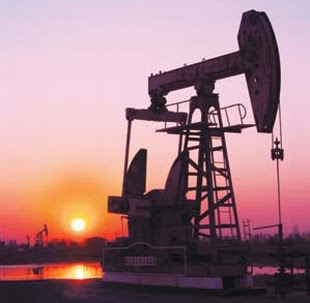Iran’s Agreement to raise OPEC output ceiling with reluctance

Twelve OPEC member countries agreed to officially fix cartel's output ceiling to 30 mbpd, a 6 million barrel increase over the ceiling they set in 2008.
According to official OPEC reports, member countries ignored quotas and increased their oil production level, which totaled 30.47 mbpd by November of 2011.
Six months ago, at a meeting of OPEC oil ministers, Iran, Venezuela and Algeria opposed Saudi Arabia's proposal to increase the OPEC's production ceiling by 1.5 mbpd.
This created a split among members and the meeting ended inconclusively.
In reality, OPEC's production ceiling unofficially reached more than 30 mbpd in November (with Saudi Arabia's sudden increase of its crude oil production to 10 .047 mbpd), excepting condensate, Libya's increase of its production ceiling again by a million bpd, and Iraq's production increase to 2.135 mbpd .
Saudi Arabia's oil production hasn't been more than 10 mbpd since 1980.
It is likely that Saudi Arabia intended its production ceiling increase to send the message at the start of OPEC's meeting that it can, and will, produce as much oil as needed.
Iran had no choice but to agree with increasing OPEC's production ceiling, merely making what was already being done legal.
With more than 10 mbpd of oil production, Saudi Arabia still has a surplus oil production capacity of 2 mbpd.
At an oil conference in London this fall, Prince Turki al-Faisal, the former head of Saudi Arabia's security apparatus, said his country's surplus production capacity equaled Iran's entire production, which equals to 2.5 million barrels per day.
So, if Iran was to be completely eliminated from the production cycle, Saudi Arabia's oil could become a replacement.
Turki al-Faisal made these remarks the day after Iran was accused of planning to assassinate Saudi Arabia's ambassador to Washington.
Saudi Arabia's abrupt oil production increase came just as European countries and the U.S. intensified their debate over boycotting Iran's oil, while at OPEC's Wednesday meeting Rostam Ghasemi, Iran's Oil Minister, said Saudi Arabia would never increase its production ceiling to help the West countries to ban Iranian oil.
There are two problems with Saudi Arabia's surplus production capacity to replace Iran's crude.
First, Saudi Arabia's surplus oil is super heavy, and Iran's oil exports are heavy and light oil respectively. This means refineries would have to be retrofitted to process super heavy oil, which would be a lot more expensive.
The second problem is that Saudi Arabia's surplus crude capacity is for "emergency purposes only", like in case with Libya, when the unrest situation in the country caused big drops in Libya's oil production (from 1.5 mln. To 300 000 barrels per day). Thus, this Saudi Arabian source is questionable to be used on a regular basis.
And if other oil producer faces the same problem as Libya or in case of another emergency situation, how would the shock of increase in oil prices be absorbed then?
In 2010 Iran's exports equaled $83 billion, which includes $71 billion of crude and condensates exports.
This alone shows how much Iran needs OPEC to keep the production ceiling low in order to keep world oil prices high. Over the last year, Iran had $58 billion in legal imports (which legally passed through Iranian customs). Mostafah Maturzadeh, deputy vice-president of the Iranian parliament's economic commission recently said that the volume of goods smuggled into Iran had reached a worrisome level and they accounted for nearly a third of the country's imports. According to Maturzadeh, the goods smuggled in Iran is valued at $19 billion annually.
Today, 80 percent of Iran's oil wells are in their second half-life (Iran has 40 oil fields, 13 offshore and 27 onshore). These wells face more than 8 percent drop in production (300-400 barrels annually).
Iran's oil exports account for half of its government's income and 80 percent of its total exports (including gas condensates).
Currently Iran has a little more than 2.1 million barrels of oil exports, a figure that continuously drops year by year.
The country's only hope for increasing its income from oil exports is keeping OPEC production down and world crude oil prices up.
In 2006, Iran produced more than 4.1 million barrels of oil. Today this figure has fallen to 3.55 million barrels while Iran's domestic oil consumption has grown by 18 percent.
Right now, Iran supplies about 5% of world's oil demands. The time will tell, how Iran would be ranked on International oil markets as an oil leader.

Comments
Post a Comment